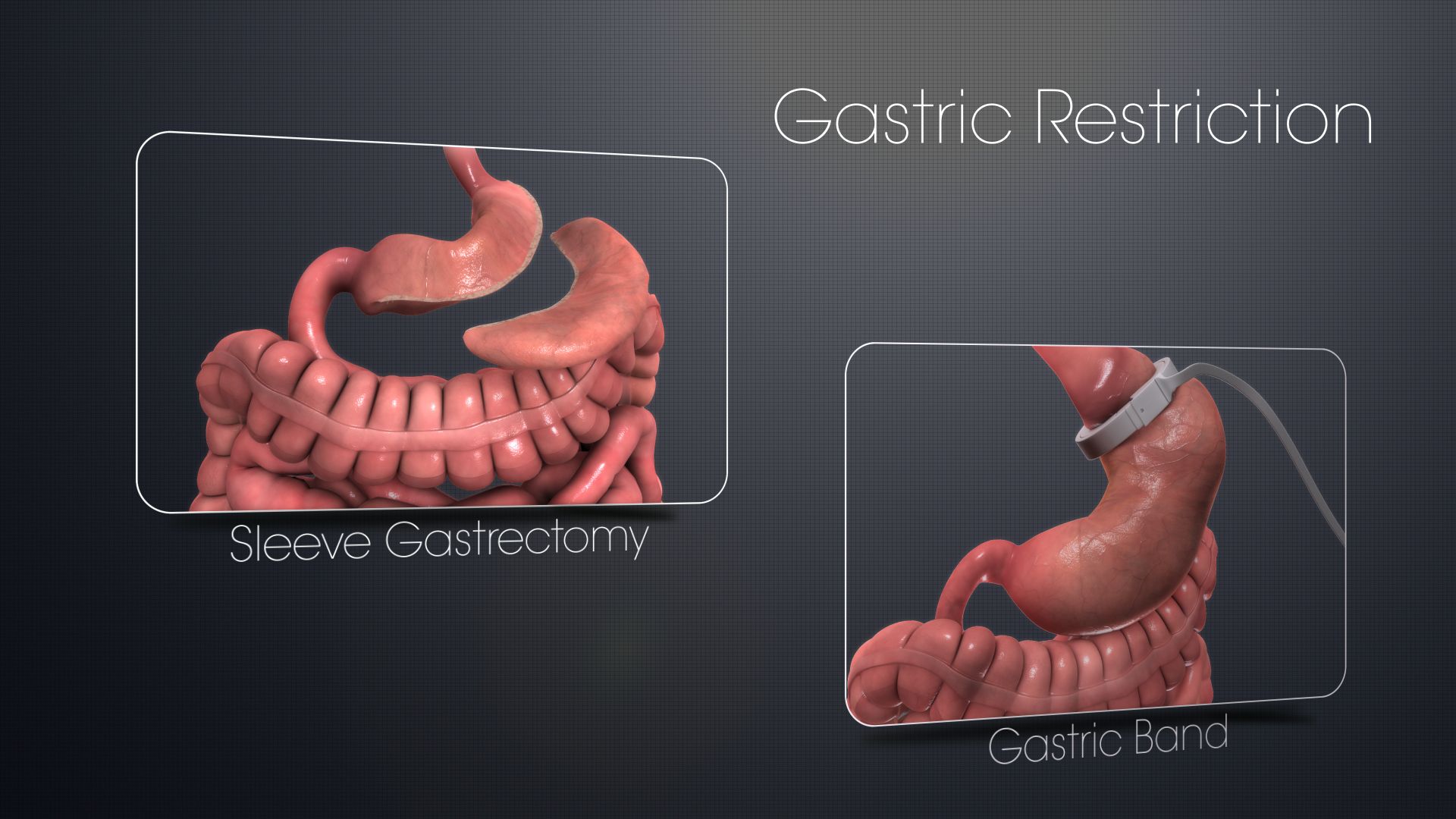… because an estimated 40% of the US population is fast treading the path towards being “morbidly obese.”
The epidemic of morbid obesity has paved way for a renewed interest in its surgical treatment.
Bariatric surgery, proved to be associated with a significantly reduced number of cardiovascular deaths and a lower incidence of cardiovascular events in obese adults, is currently the only modality that provides a significant, sustained weight loss for morbidly obese patients, with resultant improvement in obesity-related comorbidities.
Currently, it has the following three basic concepts:
We will be expanding the concept of Gastric restriction in this article.
Gastric banding is a surgical procedure involving the placement of an adjustable silicone band around the upper portion of the stomach using a laparoscope. The aim of the procedure is to restrict the size of the stomach and, hence, the amount of food it can hold. It also slows the passage of food to the intestine. The band can be tightened by filling it with saline.
By decreasing the pace at which the contents of the stomach move towards the intestine, the signals to the brain from the gut allow for a sensation of satiety with the consumption of less food.
Generally, candidates for gastric banding have a BMI over 40 kg/sq. meter, or are more than 45 kg over their ideal body weight. In cases with weight-related problematic medical conditions, such as hypertension or diabetes, the surgery can be performed on a person with a BMI of 35-40 kg/sq.meter.
3 to 5 small incisions are made, one of which is to aid in the insertion of a camera attached to a tube to get a view of the procedure on the screen. The other incisions allow for the use of surgical instruments and placement of the band. The gastric band is placed around the upper part of the stomach and set into position with sutures. The port is then placed in the wall of the abdomen and sutured in place.
The procedure is indicated for adults only and is not to be performed on those under 18 years of age.
Sleeve gastrectomy is a laparoscopic surgical removal of a large portion of the stomach along the greater curvature in which the stomach is squeezed to about 15% of its original size. The result is a sleeve or tube-like structure.
The reduced size of the stomach, however, does not cause decreased absorption of nutrients or bypass the intestines. The purpose is to make the patient feel full after eating a very small quantity of food. The procedure also aids in bringing down the levels of “hunger hormone”, ghrelin, produced by the stomach, eventually leading to a significant decrease in appetite.
No intestines are removed or bypassed during the sleeve gastrectomy.
For patients having a high body mass index (BMI) or severe heart or lung disease, sleeve gastrectomy may be beneficial as a first stage procedure as it is a shorter, lower risk operation. For such patients, the second stage (gastric bypass) is performed 12 to 18 months later after significant weight loss has occurred, the liver has decreased in size and the risk of anesthesia is much lower.
Sleeve gastrectomy is, now, also being used as a primary weight-loss procedure in lower BMI patients.
Gastroenteritis Explained
Gastroenteritis refers to inflammation and irritation of the gastrointestinal tract which includes the small intestine, large intestine, and the stomach. The condition is mostly caused due to food poisoning, bacteria, virus, or parasites. Read More..








